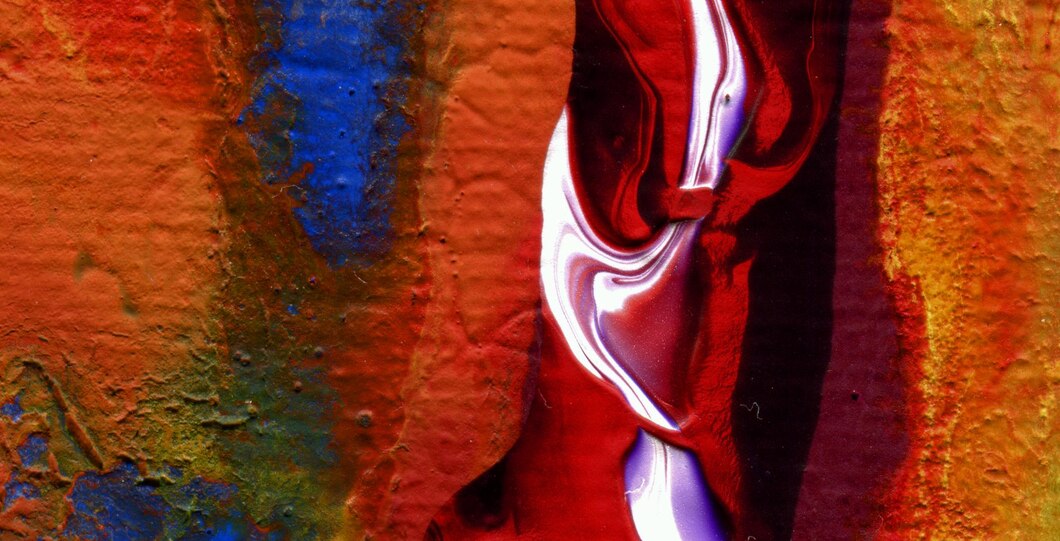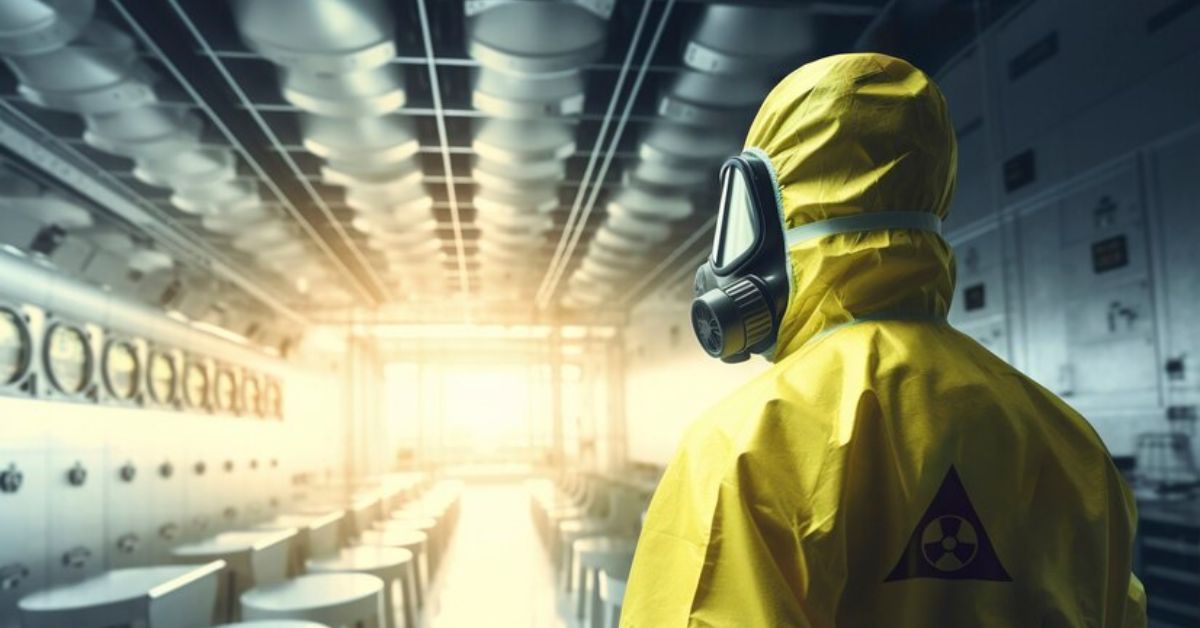Topic
Breaking the Cycle: How to Cure Ignorance Once and For All

Welcome to a journey of enlightenment and discovery as we delve into the depths of ignorance, seeking to unravel its mysteries and find the antidote. In a world where misinformation runs rampant and knowledge is power, it’s time to break the cycle and cure ignorance once and for all. Join us on this quest for truth and understanding as we explore the ways in which we can expand our minds, challenge our beliefs, and embrace a future free from the shadows of ignorance. Let’s embark on this transformative journey together!
Cure Ignorance
In the bustling world of media and publications, there exists a magazine with a bold motto: “Cure Ignorance.” This publication dares to challenge conventional wisdom, spark intellectual curiosity, and debunk falsehoods that cloud our understanding. With each issue, readers are invited on a journey of enlightenment, armed with knowledge as their weapon against ignorance.
The pages of this magazine serve as a beacon of truth in a sea of misinformation. From thought-provoking articles to in-depth analyses, “Cure Ignorance” aims to empower its audience with the tools they need to navigate an increasingly complex world. It is not just a publication; it is a movement towards greater awareness and critical thinking.
By embracing the ethos of “Cure Ignorance,” we can break free from the chains of limited knowledge and embark on a path towards growth and enlightenment. Let us open our minds, question everything, and strive for a future where ignorance has no place in shaping our beliefs or decisions.
Magazine with the motto ‘Cure ignorance’ Crossword Clue
Are you a crossword enthusiast searching for the perfect challenge? Look no further than the intriguing clue “Magazine with the motto ‘Cure ignorance'” that’s bound to test your puzzle-solving skills. This enigmatic phrase sparks curiosity and beckons players to dive deeper into its hidden meaning.
As you ponder over each letter and word, unraveling the mystery behind this crossword clue can lead you on a journey of discovery. The combination of “magazine” and “cure ignorance” may seem like an unlikely pair at first glance, but in the world of crosswords, anything is possible.
Perhaps this clue serves as a reminder of the power of knowledge and information in combating ignorance. It prompts us to seek out diverse sources of wisdom and insight, ultimately broadening our perspectives on various subjects.
So, grab your pencil or boot up your favorite crossword app – it’s time to crack the code behind “Magazine with the motto ‘Cure ignorance'” and unlock a world of mental stimulation and satisfaction!
Best answers for Magazine with the motto ‘Cure ignorance’
Looking for the best answers to find a magazine with the motto ‘Cure Ignorance’? You’re in the right place! Let’s dive into some top contenders that are dedicated to shedding light on ignorance and spreading knowledge.
One standout option is “Enlighten Monthly,” a publication committed to uncovering truths and debunking myths. Their thought-provoking articles challenge readers to think critically and question their beliefs, making it a go-to source for those seeking enlightenment.
Another noteworthy mention is “Ignorance Busters Quarterly,” known for its bold approach in tackling misconceptions head-on. With insightful commentary and investigative pieces, this magazine equips readers with the tools needed to combat ignorance in today’s complex world.
For those looking for a more scholarly read, “Mind Over Misinformation Journal” offers in-depth analyses of cognitive biases and how they contribute to ignorance. Its rigorous research sets it apart as an authoritative voice in the fight against misinformation.
When it comes to finding a magazine that embodies the motto ‘Cure Ignorance,’ these publications are leading the charge towards a more informed society.
Cure Ignorance Magazine: Crossword Clues
Are you a fan of crossword puzzles? If so, you might have come across the clues related to “Cure Ignorance Magazine.” This intriguing publication aims to shed light on various topics and challenge readers to expand their knowledge. The crossword clues within the magazine are designed to stimulate critical thinking and encourage readers to delve deeper into diverse subjects.
Solving these crossword clues can be both entertaining and educational. It’s a fun way to test your vocabulary and learn new information along the way. Whether you’re an avid puzzler or just looking for a mental workout, tackling the “Cure Ignorance Magazine” crossword can be a rewarding experience.
Next time you pick up a copy of this magazine, take some time to explore the crossword section. Who knows, you might uncover some fascinating facts and insights that broaden your horizons. Happy puzzling!
The End of Progress
As we navigate through the complexities of our modern world, one can’t help but ponder if progress is truly a linear journey. The notion of constant advancement often clashes with the reality that some areas seem to be regressing instead.
Technological innovations may dazzle us, yet societal issues persist. Is this the end of progress as we know it? Perhaps it’s a wake-up call to reassess our definitions of advancement and success.
The relentless pursuit of growth has led us down a path where material gain is prioritized over collective well-being. Could it be that true progress lies not in endless expansion, but in sustainable development and social harmony?
The challenges we face today demand a shift in mindset – from mere progression to thoughtful evolution. It’s time to reflect on what truly matters and redefine our concept of progress for a more balanced future.
Growing Up Hippie
Growing Up Hippie was like living in a colorful whirlwind of peace signs and tie-dye. The scent of incense always lingered in the air, mixing with the earthy aroma of patchouli. Our parents taught us to embrace nature, dance freely to the beat of our own drums, and question authority at every turn.
Instead of Barbie dolls and action figures, we played with handmade wooden toys and painted rocks. Our clothing was a mishmash of flowing fabrics and bell-bottoms that we proudly wore as symbols of our nonconformity.
We grew up attending music festivals where the sound of acoustic guitars filled the air, spreading messages of love and unity. We learned about communal living, sustainability, and the power of collective activism from an early age.
Despite being labeled as unconventional by mainstream society, growing up hippie instilled in us a deep sense of empathy for others and a strong desire to make the world a better place through kindness and understanding.
The Slow Death of Creativity in Sound
Remember a time when music was raw, unfiltered, and sparked a revolution in the airwaves. It wasn’t about manufactured beats or cookie-cutter lyrics; it was about pushing boundaries and challenging norms.
But as the years passed, creativity in sound began to fade. The mainstream became saturated with repetitive tracks that all sounded the same – a bland echo of what once was innovative.
Artists who dared to be different were pushed to the sidelines, overshadowed by commercial success and conformity. The slow death of creativity in sound left many longing for the soul-stirring melodies and thought-provoking lyrics that used to define an era.
Yet, amidst this decline, underground movements emerged like whispers in a crowded room – rebellious spirits refusing to let creativity be silenced. They remind us that true artistry lies not in following trends but in breaking free from them.
Let’s cherish those voices that refuse to conform, for they are the torchbearers lighting the way back to a world where music is once again an expression of untamed passion and boundless imagination.
How to Turn Neighborhoods Into Hubs of Resilience
Imagine a community where neighbors come together to support one another in times of need. Picture streets lined with vibrant gardens and local businesses thriving. This vision is not just a dream but a possibility when neighborhoods transform into hubs of resilience.
By fostering strong social connections, neighborhoods can become resilient spaces where individuals feel supported and empowered. Initiatives like community gardens, shared spaces for gatherings, and neighborhood watch programs can strengthen the bond among residents.
Encouraging sustainable practices such as recycling programs, energy-saving initiatives, and promoting local businesses can make neighborhoods more self-reliant and environmentally conscious.
Empowering community members through education, skill-building workshops, and access to resources can further enhance the resilience of neighborhoods. When everyone plays a part in creating a supportive environment, communities flourish and thrive even in challenging times.
An Economy of False Profits
In today’s world, the concept of profit often drives decisions at the expense of ethics and sustainability. The pursuit of endless growth and profit maximization has led to a system where short-term gains take precedence over long-term consequences.
Companies prioritize profitability over social responsibility, leading to exploitative practices that harm both people and the planet. This relentless focus on financial gain results in inequality, environmental degradation, and societal unrest.
An economy built on false profits perpetuates a cycle of greed and corruption, where the well-being of individuals and communities is sacrificed for monetary gain. It undermines trust in institutions and erodes the fabric of society.
It’s time to challenge this flawed economic model and strive for a more equitable system that values people over profits. Only by redefining success beyond financial metrics can we create a sustainable future for all.
Can Blockchain be Used to Achieve Racial Equity?
Can Blockchain be the key to achieving racial equity? The technology behind blockchain has the potential to revolutionize various sectors, including addressing social issues like racial inequality. By providing a secure and transparent platform for transactions, blockchain can help ensure fair distribution of resources and opportunities.
One way blockchain can contribute to racial equity is through ensuring equal access to financial services. With decentralized systems, individuals who have been historically marginalized can have more control over their financial assets without relying on traditional banking institutions that may discriminate based on race.
Moreover, blockchain’s ability to create immutable records could also help in promoting transparency in hiring practices and combating discrimination in employment. By recording and verifying credentials securely on the blockchain, it may reduce biases in recruitment processes and provide equal opportunities for all candidates regardless of their background.
While there are challenges ahead in utilizing blockchain for achieving racial equity, its innovative features hold great promise in fostering a more inclusive society where everyone has an equal chance to thrive.
Clue: “Cure Ignorance” online anthology
In the vast digital landscape of online anthologies, one title stands out with a profound message: “Cure Ignorance.” This anthology serves as a beacon of knowledge and enlightenment in a world often clouded by misinformation and misconception.
Featuring a diverse range of writers and perspectives, “Cure Ignorance” invites readers to explore new ideas and challenge their existing beliefs. Each piece within the anthology acts as a stepping stone towards greater understanding and empathy.
From thought-provoking essays to captivating short stories, this online collection is a treasure trove for those seeking intellectual stimulation and personal growth. Dive into its pages, unraveling mysteries, shedding light on complex issues, and expanding your worldview.
With each click and scroll through the “Cure Ignorance” online anthology, you embark on a journey of discovery—one that may just lead you towards a brighter future filled with wisdom and compassion.
Crossword Clue: MAGAZINE WITH THE MOTTO “CURE IGNORANCE”
Have you ever stumbled upon a crossword clue that sparked your curiosity and led you down a rabbit hole of discovery? One such intriguing clue might be “MAGAZINE WITH THE MOTTO ‘CURE IGNORANCE'”. As you fill in the boxes, your mind starts to wander, picturing a publication dedicated to shedding light on the shadows of ignorance that cloud our understanding.
Imagine flipping through the pages of this imaginary magazine, each article offering insights and perspectives that challenge preconceived notions and expand your knowledge. The motto “Cure Ignorance” serves as a beacon of hope in a world where misinformation runs rampant.
Perhaps this magazine delves into topics ranging from science and history to social issues and personal growth. It could be a platform for experts to share their wisdom or for everyday individuals to voice their experiences.
As you ponder over this crossword clue, let it serve as a reminder of the power of knowledge in breaking barriers and fostering understanding. The quest for truth may lead us down unexpected paths, but it is in embracing these journeys that we truly begin to cure ignorance.
Conclusion
In a world where ignorance can be pervasive, it is crucial to seek out knowledge and understanding. By challenging ourselves to break the cycle of ignorance, we open up opportunities for growth, empathy, and progress.
Through platforms like “Cure Ignorance” magazine and online anthologies dedicated to spreading awareness and education, we can actively combat misinformation and promote learning. Embracing diversity of thought and experiences can help us bridge gaps in understanding and build a more inclusive society.
So let’s commit to continuously educating ourselves, engaging in meaningful discussions, and seeking out different perspectives. Together, we have the power to cure ignorance once and for all.
Topic
Quakerism: A Religion or a Cult

Introduction to Quakerism
Quakerism often invites curiosity and confusion. Is it a religion, a cult, or something entirely different? With its unique practices and rich history, Quakerism stands apart from many other faith traditions. Imagine gathering in silence to seek inner peace and divine guidance instead of following elaborate rituals or sermons. This blog will dive into the world of Quakers—exploring their beliefs, historical roots, and the controversies that sometimes cloud their reputation. Join us on this journey to uncover what makes Quakerism both distinctive and deeply meaningful for those who practice it.
History of Quakerism and its Founders
Quakerism emerged in the mid-17th century during a time of religious upheaval in England. Founded by George Fox, it arose as a response to established churches and their rigid doctrines. Fox sought a direct experience of God, unmediated by clergy.
The early Quakers emphasized inner light, believing that everyone could access divine truth within themselves. This belief set them apart from more traditional Christian denominations. They faced persecution for their views, leading to imprisonments and public outcry.
Alongside Fox, figures like Margaret Fell played pivotal roles in shaping the movement’s direction. Fell was instrumental in promoting gender equality within the faith and advocating for social justice issues.
As Quakerism spread across continents—particularly to North America—it adapted and evolved while remaining rooted in its core principles of simplicity, peace, integrity, community, and equality.
Beliefs and Practices of Quakers
Quakers, or the Religious Society of Friends, embrace a unique set of beliefs centered on simplicity and integrity. They hold that every person possesses an inner light—divine guidance residing within.
Worship for Quakers often takes place in silence. Meetings are contemplative, allowing individuals to connect with their inner selves and listen for spiritual direction. This practice promotes communal sharing when someone feels moved to speak.
Quaker values extend beyond worship into daily life. Social justice is paramount; many actively engage in peace movements and humanitarian efforts worldwide. Their commitment to equality drives them to advocate for marginalized communities.
Decisions are typically made through consensus rather than voting, reflecting their belief in collective wisdom and respect for each voice present. This democratic approach fosters unity while honoring individual insights within the group dynamic, creating a supportive community atmosphere where faith can flourish naturally.
Similarities and Differences between Quakerism and other Religions
Quakerism shares common ground with various religious traditions. Like many faiths, it emphasizes compassion, social justice, and the importance of community. This focus on service resonates deeply across Christianity, Buddhism, and Islam.
However, Quaker beliefs diverge significantly in practice. Unlike more hierarchical religions, Quakers reject formal clergy. They value individual experience over dogma or outward rituals. Silent worship is a defining characteristic that sets them apart from congregational practices seen in other faiths.
In terms of spirituality, Quakers embrace direct communion with the Divine without intermediaries. This contrasts sharply with religions that emphasize sacraments or specific rites of passage as essential to spiritual growth.
While they may share fundamental values like love and peace with other denominations, the approach to understanding God remains uniquely personal within Quakerism. The emphasis on inner light fosters an environment where personal interpretation flourishes rather than adhering strictly to prescribed doctrines.
Controversies surrounding Quakerism and accusations of it being a cult
Quakerism often finds itself at the center of controversy. Critics sometimes label it a cult due to its non-traditional structure and lack of formal clergy. This perspective stems from misunderstandings about how Quakers practice their faith.
The emphasis on personal revelation can be unsettling for those accustomed to hierarchical religious frameworks. Many people are wary when a group encourages individuals to seek direct experiences with the divine, away from established dogmas.
Additionally, some ex-members have shared negative experiences, which fuel these accusations. Their stories highlight issues like social pressure or emotional manipulation that may occur in any close-knit community.
Yet, many current Quakers reject this labeling altogether. They emphasize their commitment to peace, equality, and simplicity as core tenets that embody love rather than coercion or control. The dialogue around these controversies continues to evolve within both the wider society and among believers themselves.
Personal testimonies from Quakers about their faith
Quakers often describe their faith as a profound personal experience. Many emphasize the inner light that guides them through life’s challenges. This spiritual connection fosters a sense of peace and community.
One Quaker shared how attending silent meetings has transformed her understanding of prayer. Instead of spoken words, she finds power in stillness, allowing thoughts to flow freely without interruption.
Another spoke about the importance of social justice within Quaker teachings. He felt compelled to act when witnessing inequality, motivated by his belief in every person’s inherent worth.
These testimonies highlight a diverse range of experiences rooted in similar principles. The emphasis on direct communion with God shapes each individual’s journey uniquely, creating an inclusive space for personal exploration and communal growth.
Conclusion: Understanding the true nature of Quakerism
Quakerism stands apart with its unique approach to spirituality. It’s a faith grounded in simplicity, peace, and equality.
Many Quakers find their strength through personal experiences rather than rigid doctrines. This creates a dynamic community where individuals explore their relationship with the Divine.
The misconceptions surrounding Quakerism often stem from misunderstandings about its practices and beliefs. Critics may label it as a cult due to its unconventional structure and deep commitment to social justice.
Yet, at its core, Quakerism emphasizes inner light and personal revelation. It encourages followers to seek truth within themselves while fostering communal support.
Personal testimonies shed light on the profound impact of this faith on individual lives—a journey marked by introspection, compassion, and purposefulness that transcends traditional religious boundaries.
FAQs
- What are the core beliefs of Quakers?
Quakers emphasize simplicity, peace, integrity, community, and equality. They believe in the “Inner Light,” which reflects God’s spirit within everyone. - Do Quakers have a formal church structure?
No. Quaker meetings are often informal gatherings without hierarchical leadership. Decisions are made collectively through consensus. - Are all Quakers pacifists?
While many Quakers advocate for peace and non-violence, there can be variations in individual beliefs regarding conflict and military service. - How do Quakers worship?
Worship can vary widely among different groups but often includes silent reflection or prayer. Some meetings may include spoken ministry as led by participants inspired by their Inner Light. - Can anyone become a Quaker?
Yes! People from diverse backgrounds can join the faith as long as they resonate with its principles and values. - Is there an official set of texts like other religions?
Unlike many religions, there isn’t a single holy book for all quakers; instead, various writings from early founders such as George Fox guide their practices alongside personal experience. - What distinguishes modern-day quaking from historical practices?
Today’s practice has evolved to embrace social justice issues more actively while retaining core spiritual tenets established centuries ago.
Understanding these aspects sheds light on what makes Quakerism both distinct yet approachable for those seeking deeper meaning in life’s journey. The dialogue surrounding its classification—whether it’s seen as religion or cult—reveals more about societal perceptions than it does about the faith itself.
Topic
Fabrice Moello: A Visionary in Modern Art

Introduction
Fabrice Moello is a name that resonates deeply within the contemporary art world. Known for his unique style and profound influence, Moello has carved a niche for himself as a visionary artist. His work, characterized by its innovative approach and emotional depth, has garnered international acclaim and continues to inspire both critics and art enthusiasts alike.
Early Life and Background
Fabrice Moello was born into a family that cherished creativity and artistic expression. Growing up, he was surrounded by a rich tapestry of art and culture, which profoundly influenced his early interest in the arts. As a child, Moello spent countless hours sketching and painting, showing a natural talent that would later define his career.
Education and Training
Moello’s formal education in art began at a prestigious art school, where he honed his skills and developed his unique style. His education was not limited to traditional techniques; he was deeply influenced by modernist movements and avant-garde artists, which broadened his perspective and enriched his creative vision. Mentored by renowned artists, Moello’s training provided him with the foundation needed to embark on a successful artistic journey.
Artistic Style and Influences
Fabrice Moello’s artistic style is a blend of abstract expressionism and contemporary realism. His works often feature bold colors, dynamic compositions, and a remarkable interplay of light and shadow. Influenced by the likes of Picasso, Rothko, and Basquiat, Moello’s art reflects a deep understanding of human emotions and experiences, making his pieces both thought-provoking and visually captivating.
Major Works and Achievements
Throughout his career, Moello has created numerous masterpieces that have left an indelible mark on the art world. Some of his most notable works include “Eternal Dance,” “Fragments of Reality,” and “Whispers of Time.” These pieces have not only received critical acclaim but have also earned him several prestigious awards, solidifying his status as a leading contemporary artist.
Exhibitions and Shows
Moello’s art has been showcased in numerous exhibitions and shows around the world. His solo exhibitions have drawn large crowds, with art lovers eager to experience his work firsthand. Noteworthy exhibitions include his retrospectives at the MoMA in New York, the Tate Modern in London, and the Centre Pompidou in Paris. His international shows have further expanded his reach, allowing his art to touch a global audience.
Impact on Contemporary Art
Fabrice Moello’s impact on contemporary art cannot be overstated. His innovative techniques and profound themes have influenced a new generation of artists. Moello’s ability to convey complex emotions and narratives through his work has set a new standard in modern art, inspiring countless artists to explore new creative avenues.
Collaborations and Projects
Over the years, Moello has collaborated with various artists and institutions, resulting in groundbreaking projects that push the boundaries of traditional art. One of his notable collaborations was with the fashion house Dior, where he designed a series of exclusive prints for their haute couture collection. These projects not only showcase his versatility but also his ability to blend art with other creative fields seamlessly.
Philosophy and Inspiration
At the core of Moello’s work lies a deep philosophical understanding of life and art. He believes that art should evoke emotion and provoke thought. His inspiration comes from a myriad of sources, including nature, human interactions, and personal experiences. This philosophy is evident in his work, which often explores themes of existence, identity, and the human condition.
Techniques and Mediums
Fabrice Moello is known for his experimental approach to art. He employs a variety of techniques, from traditional oil painting to digital media. His ability to master different mediums allows him to continuously evolve his style and produce work that is both innovative and timeless.
Critics and Reviews
Moello’s work has been met with widespread acclaim from critics and art enthusiasts. Renowned art critic John Berger described his work as “a vivid exploration of the human psyche,” while others have praised his ability to convey deep emotional truths through his art. These positive reviews have cemented his reputation as a leading figure in contemporary art.
Personal Life
Beyond his professional achievements, Fabrice Moello leads a rich personal life. He is a dedicated family man and an avid supporter of various charitable causes. His philanthropic efforts include supporting art education programs and funding initiatives that provide resources to aspiring artists.
Challenges and Controversies
Like many artists, Moello has faced his share of challenges and controversies. From navigating the competitive art market to dealing with criticism, he has overcome numerous obstacles. However, his resilience and unwavering commitment to his craft have allowed him to turn these challenges into opportunities for growth and innovation.
Future Endeavors
Looking ahead, Fabrice Moello has several exciting projects in the pipeline. He plans to continue exploring new artistic techniques and expanding his creative horizons. His future goals include organizing more international exhibitions and collaborating with other artists to create groundbreaking work that challenges conventional norms.
Conclusion
Fabrice Moello journey as an artist is a testament to his talent, dedication, and visionary approach to art. His work continues to inspire and influence the contemporary art scene, making him a true icon in the field. As he moves forward, there is no doubt that Moello will continue to leave an indelible mark on the art world, captivating audiences with his innovative and emotionally resonant creations.
FAQs
- What is Fabrice Moello known for?
Fabrice Moello is known for his unique blend of abstract expressionism and contemporary realism, as well as his innovative techniques and emotionally charged artworks. - What are some of Fabrice Moello’s most famous works?
Some of Fabrice Moello’s most famous works include “Eternal Dance,” “Fragments of Reality,” and “Whispers of Time.” - How has Fabrice Moello influenced modern art?
Moello has influenced modern art through his innovative techniques, profound themes, and ability to convey complex emotions, setting new standards and inspiring a new generation of artists. - FAQ 4: Where can I see Fabrice Moello’s art?
Fabrice Moello’s art can be seen in major galleries and museums worldwide, including the MoMA in New York, the Tate Modern in London, and the Centre Pompidou in Paris. - What are Fabrice Moello’s future plans?
Moello plans to continue exploring new artistic techniques, organizing international exhibitions, and collaborating with other artists to create groundbreaking work.
Topic
Biohazard Cleanup: Ensuring Safety and Compliance

Biohazard cleanup is a critical process that involves the removal and decontamination of hazardous materials to ensure safety and compliance with health regulations. Biohazard situations can arise from various incidents, including crime scenes, accidents, chemical spills, and infectious disease outbreaks. Proper handling and disposal of biohazardous materials are essential to protect human health and the environment. This comprehensive guide provides an overview of biohazard cleanup, types of biohazard situations, health and safety protocols, and the importance of professional cleanup services.
In the event of an unforeseen biohazard incident, having access to a reliable and prompt service is essential. A 24/7 Emergency Restoration St. George team ensures that all biohazard situations are addressed swiftly, providing peace of mind and comprehensive cleanup services around the clock.
Types of Biohazard Situations
Biohazardous materials can pose significant risks if not handled correctly. Various situations can create biohazard conditions, requiring specialized cleanup procedures. Here are some common types of biohazard scenarios:
1. Crime Scenes and Trauma
Crime scenes and trauma incidents, such as homicides, suicides, and accidents, often involve blood, bodily fluids, and other biological materials. These materials can carry pathogens that pose health risks to anyone who comes into contact with them.
2. Hoarding Situations
Hoarding can create environments filled with hazardous materials, including mold, bacteria, and decaying organic matter. The accumulation of items and waste can lead to infestations of rodents and insects, further complicating the cleanup process.
3. Chemical Spills
Chemical spills, whether industrial or residential, can involve hazardous substances that are toxic, corrosive, or flammable. Proper containment and neutralization are necessary to prevent environmental contamination and health risks.
4. Infectious Disease Outbreaks
Outbreaks of infectious diseases, such as COVID-19, Ebola, and hepatitis, require thorough decontamination to prevent the spread of pathogens. Cleanup involves disinfecting surfaces, equipment, and air systems to eliminate the risk of transmission.
5. Sewage Backups
Sewage backups can introduce harmful bacteria, viruses, and parasites into the environment. These pathogens can cause severe illnesses if not properly managed and cleaned up.
6. Animal Infestations
Animal infestations, including rodents, birds, and insects, can create biohazard conditions through droppings, urine, and carcasses. These materials can carry diseases and pose health risks to humans.
Health and Safety Protocols
Biohazard cleanup requires strict adherence to health and safety protocols to protect workers and the public. The following steps outline the essential protocols involved in biohazard cleanup:
Personal Protective Equipment (PPE)
Workers must wear appropriate PPE to protect themselves from exposure to hazardous materials. PPE typically includes:
- Gloves: To prevent direct contact with biohazardous materials.
- Masks and Respirators: To protect against inhalation of harmful particles and pathogens.
- Goggles and Face Shields: To protect the eyes and face from splashes and airborne contaminants.
- Protective Suits: To prevent contamination of clothing and skin.
Containment and Isolation
The affected area must be contained and isolated to prevent the spread of biohazardous materials. This involves:
- Setting Up Barriers: Using plastic sheeting and other materials to create physical barriers.
- Establishing Negative Pressure: Using air filtration systems to maintain negative pressure and prevent contaminants from escaping the containment area.
- Controlling Access: Limiting access to authorized personnel only.
Safe Handling and Disposal
Proper handling and disposal of biohazardous materials are crucial for safety and compliance. This includes:
- Collecting and Containing: Using appropriate containers and bags for collecting and containing biohazardous materials.
- Labeling: Clearly labeling containers with biohazard symbols and relevant information.
- Transporting: Following regulations for transporting biohazardous waste to disposal facilities.
- Disposing: Using licensed disposal facilities for the safe destruction of biohazardous materials.
Decontamination and Disinfection
Decontamination and disinfection are essential to eliminate pathogens and ensure a safe environment. This involves:
- Cleaning: Removing visible debris and organic matter from surfaces.
- Disinfecting: Using EPA-approved disinfectants to kill pathogens on surfaces.
- Testing: Conducting tests to verify the effectiveness of the decontamination process.
Training and Certification
Biohazard cleanup workers must undergo specialized training and certification to handle hazardous materials safely. Training covers:
- Hazard Recognition: Identifying different types of biohazardous materials and their risks.
- Safe Practices: Learning safe handling, containment, and disposal procedures.
- Emergency Response: Preparing for potential emergencies and knowing how to respond effectively.
Importance of Professional Cleanup Services
Engaging professional biohazard cleanup services is crucial for ensuring thorough and compliant remediation. Here are some reasons why professional services are essential:
Expertise and Experience
Professional cleanup companies have the expertise and experience to handle a wide range of biohazard situations. They understand the risks involved and know how to manage them effectively, ensuring that the cleanup process is conducted safely and efficiently.
Specialized Equipment
Biohazard cleanup requires specialized equipment and tools that professionals are equipped with. This includes air filtration systems, containment barriers, and EPA-approved disinfectants. Using the right equipment ensures that the cleanup is thorough and compliant with regulations.
Compliance with Regulations
Biohazard cleanup is subject to strict regulations and guidelines set by organizations such as OSHA, EPA, and CDC. Professional cleanup services are well-versed in these regulations and ensure that all procedures comply with legal requirements, protecting you from potential liabilities.
Health and Safety
Professional cleanup services prioritize health and safety, implementing rigorous protocols to protect workers and the public. They use appropriate PPE, follow containment procedures, and ensure proper decontamination to eliminate health risks.
Peace of Mind
Hiring professionals for biohazard cleanup provides peace of mind, knowing that the situation is being handled by experts. It allows you to focus on other important matters while ensuring that the cleanup is completed safely and thoroughly.
Steps Involved in Biohazard Cleanup
Biohazard cleanup is a multi-step process that involves assessment, containment, removal, decontamination, and restoration. Here is an overview of the typical steps involved:
1. Initial Assessment
The first step is to conduct a thorough assessment of the biohazard situation. Professionals will evaluate the extent of contamination, identify the type of biohazardous materials, and develop a cleanup plan. This assessment helps determine the necessary resources, equipment, and safety measures required.
2. Containment and Isolation
To prevent the spread of contaminants, the affected area is contained and isolated. This involves setting up physical barriers, establishing negative pressure, and controlling access to the area. Containment ensures that biohazardous materials are confined to a specific area, reducing the risk of exposure.
3. Removal of Biohazardous Materials
Biohazardous materials are safely removed from the affected area. This includes collecting and containing blood, bodily fluids, chemicals, and other hazardous substances. Proper handling and disposal procedures are followed to ensure compliance with regulations and prevent environmental contamination.
4. Decontamination and Disinfection
The affected area is thoroughly cleaned and disinfected to eliminate pathogens and contaminants. Specialized cleaning agents and techniques are used to ensure that all surfaces, equipment, and air systems are decontaminated. This step is crucial for restoring a safe and healthy environment.
5. Final Inspection and Testing
After decontamination, a final inspection and testing are conducted to verify the effectiveness of the cleanup process. Professionals use testing methods to ensure that all biohazardous materials have been removed and that the area is free from contaminants.
6. Restoration
The final step involves restoring the affected area to its pre-contamination condition. This may include repairing or replacing damaged structures, repainting, and reinstalling fixtures. The goal is to return the property to a safe and habitable state.
Legal and Regulatory Considerations
Biohazard cleanup is subject to various legal and regulatory considerations to ensure safety and compliance. Here are some key regulations and guidelines:
Occupational Safety and Health Administration (OSHA)
OSHA sets standards for worker safety in biohazard cleanup situations. This includes guidelines for PPE, training, and safe handling procedures. Employers must comply with OSHA regulations to protect workers from exposure to hazardous materials.
Environmental Protection Agency (EPA)
The EPA regulates the disposal of biohazardous waste to prevent environmental contamination. This includes guidelines for the collection, transportation, and disposal of hazardous materials. Compliance with EPA regulations ensures that biohazardous waste is managed safely and responsibly.
Centers for Disease Control and Prevention (CDC)
The CDC provides guidelines for the prevention and control of infectious diseases. This includes recommendations for decontamination and disinfection procedures to eliminate pathogens. Following CDC guidelines helps prevent the spread of infectious diseases in biohazard cleanup situations.
Local and State Regulations
Local and state regulations may also apply to biohazard cleanup. These regulations can vary depending on the type of biohazard situation and the specific requirements of the jurisdiction. It’s important to be aware of and comply with all applicable local and state regulations.
Conclusion
Biohazard cleanup is a critical process that ensures the safety and health of individuals and the environment. Understanding the types of biohazard situations, health and safety protocols, and the importance of professional cleanup services is essential for effective remediation. By adhering to strict guidelines and engaging professional services, you can ensure thorough and compliant biohazard cleanup, protecting yourself, your property, and the public. Whether dealing with crime scenes, chemical spills, or infectious disease outbreaks, proper biohazard cleanup is vital for maintaining a safe and healthy environment.

 Cartoon5 months ago
Cartoon5 months agoUnlocking the Potential of Nekopoi.care: A Comprehensive Guide

 Game4 months ago
Game4 months agoExploring Aopickleballthietke.com: Your Ultimate Pickleball Destination

 BUSINESS4 months ago
BUSINESS4 months agoWhat Companies Are In The Consumer Services Field

 HEALTH5 months ago
HEALTH5 months agoUnveiling the Mystery of Pikruos: A Comprehensive Guide

 HOME IMPROVEMENT5 months ago
HOME IMPROVEMENT5 months agoExploring the Events of 2023-1954: A Look Back in Time

 TECHNOLOGY4 months ago
TECHNOLOGY4 months agoUnderstanding Coomersu

 FASHION4 months ago
FASHION4 months ago5 Reasons Why Every Woman Needs a Long Sleeve Dress in Her Closet

 ENTERTAINMENT5 months ago
ENTERTAINMENT5 months agoThe Epic Return: Revenge of the Iron-Blooded Sword Hound
















